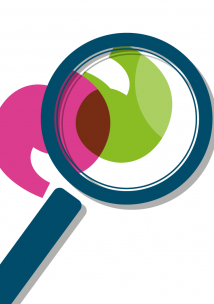The public’s experience of monitoring their blood pressure at home
A summary
People increasingly use remote medical technologies to keep tabs on their health. Blood pressure monitors are one of the many fast-growing solutions that can help people monitor and improve their health in the comfort of their own homes.
NHS Digital asked us to help them evaluate their remote blood pressure monitoring pilot (BP@Home) to understand peoples’ experiences of remote blood pressure monitoring and how GPs use their readings.
With the help of five local Healthwatch areas (Hampshire, Oxfordshire and Buckinghamshire, Gloucestershire, Darlington and Hammersmith and Fulham), we supported around 500 people to share their experiences.
People told us that there are many benefits to blood pressure monitoring at home, including peace of mind, feeling in control, and convenience. But there are serious questions about whether the real benefits of better health outcomes are being realised.
We found that there are vital gaps in GP processes that negatively impact patients' experiences. This is demotivating for people and means opportunities to address blood pressure problems could be missed.
Some of the things patients told us
-
People use blood pressure monitors at home for many reasons – not just when advised by medical professionals
-
The experiences of those prompted by their GP to use a monitor at home fall short in many ways.
-
People were not given enough information about how to use their monitors
-
Many people are not submitting readings regularly.
-
When people do submit readings, they often don't hear back from their GP
-
-
People are willing to continue monitoring blood pressure remotely but have ideas on how the NHS can improve support
Steps to improve support
Our recommendations include steps the NHS can take to improve support and outcomes for people who monitor their blood pressure at home. These include:
- Better information about high blood pressure, so people know why they should monitor their pressure, what "normal" readings look like, how to reduce risks and when to act.
- Guidance and support around taking and submitting blood pressure readings.
- Better solutions for submitting readings easily and efficiently.
- Feedback on submitted readings and provision of ongoing support.
- Advice on what to do to improve blood pressure.
- Acknowledge concerns amongst patients and provide access to a GP if required.
Participants are mostly able, willing, and keen to use digital platforms to submit blood pressure readings. They will consider using other forms of remote monitoring if the right processes are in place, including providing information, guidance, feedback, and advice. The NHS can adapt the recommendations above to suit other types of remote medical technology.
Many participants want to take more responsibility for their health and wellbeing, but there needs to be a better partnership between GPs and patients for this to work. The NHS can achieve more by being a partner who helps promote people's wellness, rather than only focussing on fixing issues once they reach a crisis point.
Read the report in full
If you need this report in a different format, please email enquiries@healthwatch.co.uk or call 030000 68 3000.


